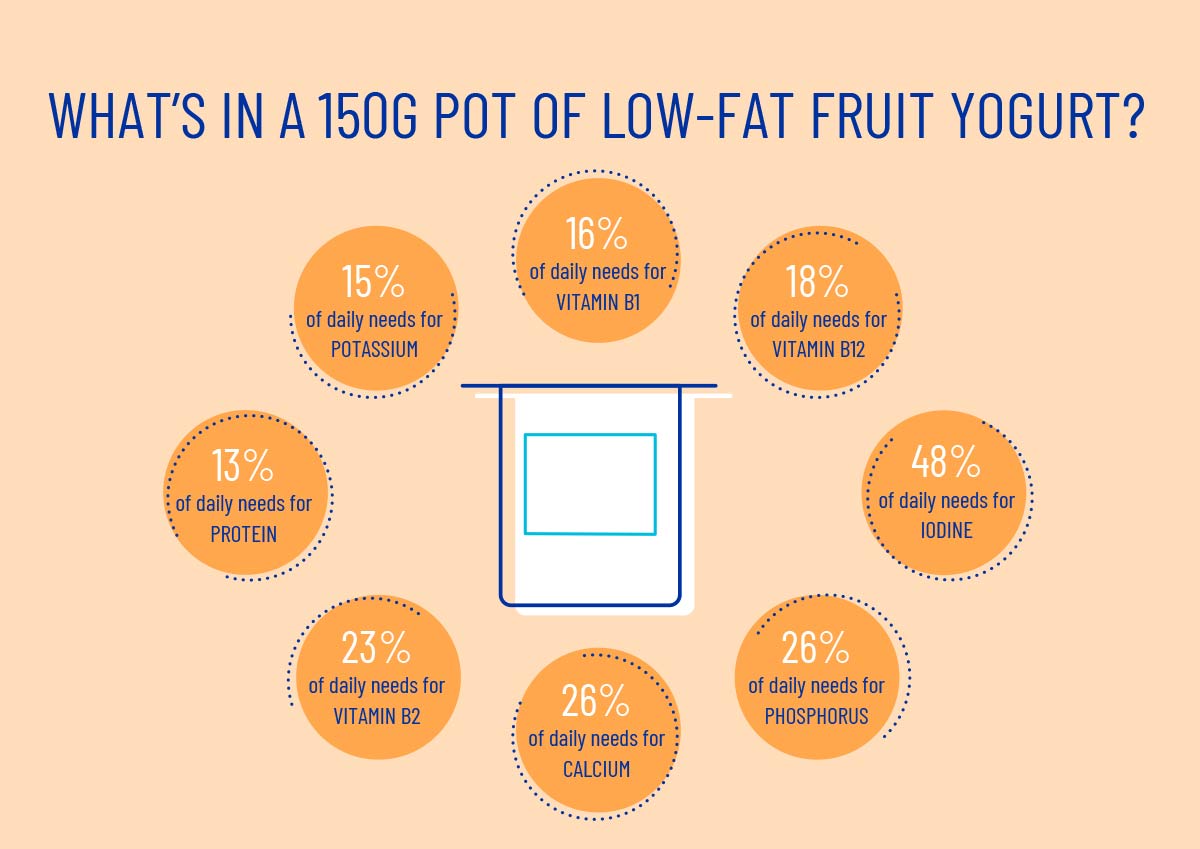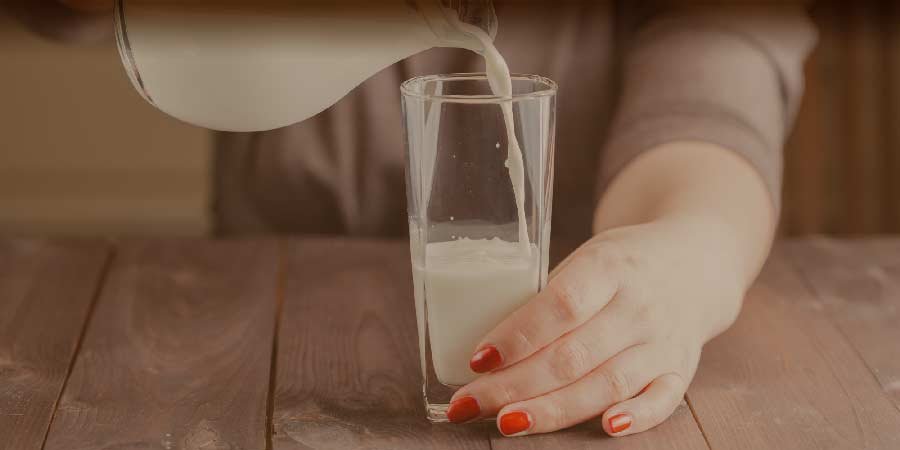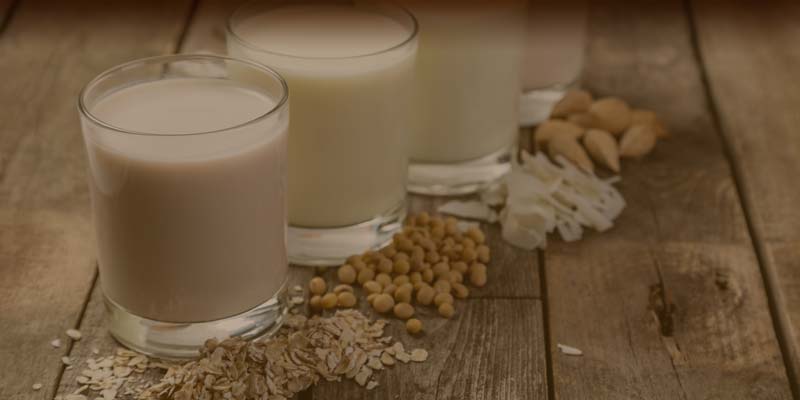Spooned over fruit, served with cereal, added to curries or used to make dips, yogurt is versatile and can be used in both sweet and savoury dishes. Whether you prefer it plain or flavoured, creamy or fat-free, there’s a variety of yogurt to suit you, whatever your dietary needs. And whichever you choose, you can be safe in the knowledge that you’ll enjoy a variety of nutrients.
Q: What nutrients are in yogurt?
A: Like the milk from which yogurt is made, most varieties provide protein, calcium, phosphorus, potassium, iodine and a selection of B vitamins. But different types of yogurt can vary in the amounts of calories, fat and sugar they contain. The packaging for all yogurts contains clear nutrition information making it easy for you to see the calories and how much fat and sugar is in your favourite.
Q: What’s the difference between plain and flavoured yogurt?
A: All yogurt starts out being plain, then extra ingredients such as fruit or honey are sometimes added for flavour. To make yogurt, harmless bacteria – known as yogurt cultures – are added to milk. This turns lactose, the natural sugar in milk, into lactic acid, which thickens the milk and turns it into a creamy yogurt with a delicious, tangy taste. Yogurt that’s packaged and sold like this is called plain or natural yogurt and is perfect for using in savoury dishes or serving with cereal or fruit. Yogurts that have extra ingredients added to them – for example, fruit, honey or vanilla – are called flavoured yogurts. These make a simple, nutritious desert on their own but are also good paired with extra fruit or used in smoothies.
Q: What is live yogurt?
A: The yogurt we buy contains the living yogurt cultures or bacteria that are added to milk to turn it into yogurt. Some reach our large intestine where they help to keep our gut healthy – that’s why they’re sometimes called ‘good’ bacteria. All yogurts contain these ‘live’ bacteria but sometimes specific types and quantities of bacteria are added to boost the amount. When we eat yogurt, these live bacteria move through our digestive system.
Q: How much fat is there in yogurt?
A: The fat content of yogurt varies according to the type you buy but low fat and virtually fat-free yogurts are very popular. These are usually low in saturated fat, too. The best way to see how much fat there is in yogurt is to look at the label. Anything with less than 3g fat or 1.5g saturates per 100g is low in these nutrients.
Q: How much sugar do yogurts contain?
A: All types of yogurt contain a natural sugar called lactose. This is naturally found in the milk from which yogurt is made. Health organisations around the world, including the NHS, agree there’s no need to avoid or limit the type of sugar found naturally in milk as it’s not harmful to health.
Plain or natural varieties of yogurt don’t have any extra sugar added to them. Therefore, all the sugars they contain comes from lactose – one of the sugars that doesn’t need to be limited.
Flavoured yogurts often contain fruit. Like the natural sugars in milk, the natural sugar in fruit (fructose) doesn’t need to be limited when it’s eaten in the form of fruit. Yogurts may also be sweetened with sweeteners or a little sugar, honey or other sweet ingredients such as toffee. The sugar content varies depending on the ingredients that are added.
Yogurts contribute far less sugar to our diets than you might think. Amongst working-age adults, just 4% of the free sugars – the ones we should cut down on – come from yogurt. Even amongst children, yogurts add less sugar to their diets than might be expected. In toddlers, just 12% of free sugars come from yogurt; in primary cool children it’s 6%; and in 11 to 18 year olds, it’s just 3%. It’s worth remembering too, that yogurt is a nutrient-dense food – this means any sugar it contains comes naturally packaged with protein and many vitamins and minerals.
Plain yogurt
| Whole | Low-Fat | Fat-free | Greek -style | |
| Energy kJ / kcal | 500/119 | 365/86 | 345/81 | 827/200 |
| Fat g | 4.5 | 1.5 | 0.3 | 15.3 |
| Saturates g | 2.9 | 1.1 | 0.2 | 10.2 |
| Sugar g | 11.7 | 11.3 | 11.9 | 6.8 |
Fruit yogurt
| Whole | Low-fat | Fat-free | Greek-style | |
| Energy kJ / kcal | 695/164 | 497/117 | 375/89 | 858/206 |
| Fat g | 4.5 | 1.7 | 0.3 | 12.6 |
| Saturates g | 3 | 1.2 | 0.2 | 8.4 |
| Sugar g | 24.9 | 19.1 | 14.1 | 15.8 |
All values are per 150g pot
A 150g pot low-fat fruit yogurt provides just 21% of the amount of total sugars recommended for a day*
*Based on Reference Intakes of 90g sugars
Q: How much yogurt should I have a day?
A: There’s no set amount. How much someone chooses to enjoy should be based on their lifestyle, food preferences and dietary needs. However, around the world, milk and dairy products are considered to be one of the four main food groups, highlighting the important part they play in helping us achieve a healthy balanced diet. The British Dietetic Association recommends three portions of dairy a day, where an adult sized portion is:
- A glass of semi-skimmed milk
- A 150g port of plain low-fat yogurt
- A 30g matchbox-sized piece of cheese or 3 tbsp (120g) cottage cheese
Q: Do I need to give up yogurt if have a lactose intolerance?
Some people find they can still enjoy yogurt, even if they suffer with lactose intolerance. This may be because the friendly bacteria that are used to make yogurt have already broken down some of the lactose in milk. This is great news as it means sufferers can enjoy the taste of yogurt but also benefit from all the nutrients it contains.

Last reviewed: 03/2021
Next review due: 03/2023










